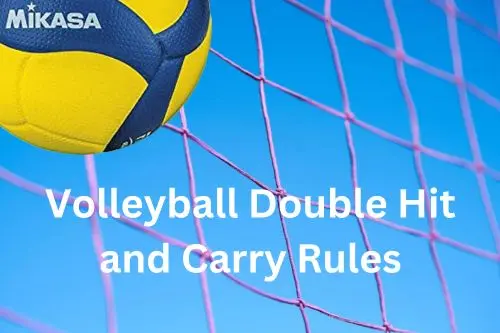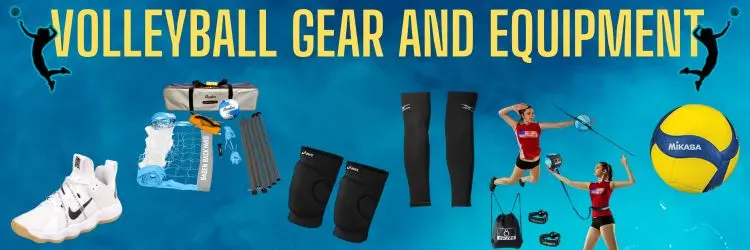Volleyball Double Hit and Carry Rules

Volleyball Double Hit and Carry Rules: A Complete Guide
Among the many technical regulations volleyball players must follow, two important ones are the double hit and the carry (also known as a lift). Understanding these rules is essential for players, coaches and fans to appreciate the flow of the game and ensure fair play.
In this article, we’ll look into the specific rules regarding double hits and carrying the ball, when these infractions occur, and how they are called during a match.
What is a Double Hit in Volleyball?
A double hit occurs when a player touches the ball twice in succession, or the ball contacts various parts of the player’s body successively, without another player touching it in between.
Example of a double hit:
- A player receives a hard serve and the ball bounces off their arms and then their chest before going up.
- A setter contacts the ball with one hand and then the other hand separately while attempting to set.
According to FIVB (Fédération Internationale de Volleyball) and most official rulebooks:
- “A player may not hit the ball twice in succession, except on the team’s first contact (e.g., serve reception or defensive play).”
This means:
- On the first team contact (such as receiving a serve or a spike), multiple contacts are allowed if they occur during one action.
- After the first contact, multiple contacts by the same player without an intervening player are not permitted.
When is a Double Hit Legal?
Double hits are allowed in these cases:
- First contact: If the ball touches multiple parts of the player’s body in a single motion when receiving a serve or digging an attack, it is legal.
- Hard driven ball: If a ball is attacked forcefully (a “hard driven ball”), a player can have multiple contacts with the ball during one attempt to play it.
Key point: The referee must judge whether the multiple contacts were part of a single attempt and action, rather than two separate actions.
Common Situations Leading to a Double Hit Call
- Setting Errors: If the setter mishandles the ball and the contacts from each hand are not simultaneous, it may be called a double hit.
- Overhead Pass: An inaccurate overhead pass that visibly contacts the hands at different times.
- Uncontrolled Dig: A defensive player might unintentionally let the ball hit their arms and then their body and if it’s not during the first contact, it’s illegal.
Tip for players: Work on soft hands, simultaneous contact when setting and better ball control to avoid double hits.
What is a Carry (or Lift) in Volleyball?
A carry, also referred to as a lift, happens when the ball rests in a player’s hands or body for too long, instead of being cleanly hit. It is considered an illegal handling of the ball.
Example of a carry:
- A player catches or throws the ball instead of hitting it.
- A setter holds the ball too long before releasing it during a set.
According to official volleyball rules:
- “The ball must be hit, not caught or thrown. It can rebound in any direction.”
When Does a Carry Occur?
A carry typically occurs when:
- The ball comes to a complete stop or almost stops in the player’s hands.
- The ball is lifted or pushed instead of being hit cleanly.
- The player uses an open hand underhand motion to scoop the ball up.
In short, any prolonged contact with the ball can be considered a carry.
How Referees Judge a Carry
Judging a carry can sometimes be subjective. Referees look for:
- Duration of contact: Was the ball momentarily held?
- Smoothness of action: Was the ball hit cleanly or was it lifted or thrown?
- Direction of motion: If the player seemed to “guide” or “redirect” the ball too much, it can be called a lift.
In competitive play, referees are trained to distinguish between clean hits and illegal carries by closely observing player motion and ball reaction.
Common Situations Leading to a Carry Call
- Setting Too Low: If a setter’s hands are too low, it’s easier to be called for a lift, especially if the ball appears to be pushed upward.
- Overhead Pass Mishandling: If a player tries to save the ball with open hands and the ball lingers in their palms.
- One Handed Digs: When digging a ball with an open hand, if the motion is more of a “scooping” action rather than a clean rebound.
- Pancake Save: If the ball visibly rests on the hand during a pancake dig (when the hand is flat on the floor), it may be called a carry.
Differences Between a Double Hit and a Carry
| Aspect | Double Hit | Carry (Lift) |
|---|---|---|
| Definition | Two successive contacts by one player. | Ball is caught, thrown, or lifted. |
| Focus | Number and sequence of contacts. | Duration and smoothness of contact. |
| Exception | First team contact allows multiple touches in one action. | No exceptions: ball must be cleanly hit. |
| Referee’s Focus | Timing between contacts. | Whether the ball is “resting” in control. |
Key Tips to Avoid Double Hits and Carries
- Practice clean setting technique: Keep hands even and motion smooth.
- Work on quick reflexes: React fast to hard driven balls, minimizing multiple body contacts.
- Develop good ball control: Especially on digs and serve receptions.
- Stay relaxed: Tense hands and arms can lead to mishandling the ball.
Remember, the best way to avoid being called for a double hit or carry is to maintain smooth, confident and clean contacts with the ball.
Conclusion
Double hits and carries are two of the most common handling violations in volleyball. Knowing the specific rules about these infractions helps players stay in compliance and elevate their skills. A double hit focuses on two contacts in succession by one player, while a carry involves the ball being caught or held too long.
Both rules are designed to preserve the fast, dynamic nature of volleyball. By mastering clean ball handling techniques, players can minimize these errors and contribute to a more exciting and fair match.
Whether you’re a beginner learning the basics or an experienced player polishing your technique, understanding and respecting the double hit and carry rules is crucial for success on the court.


